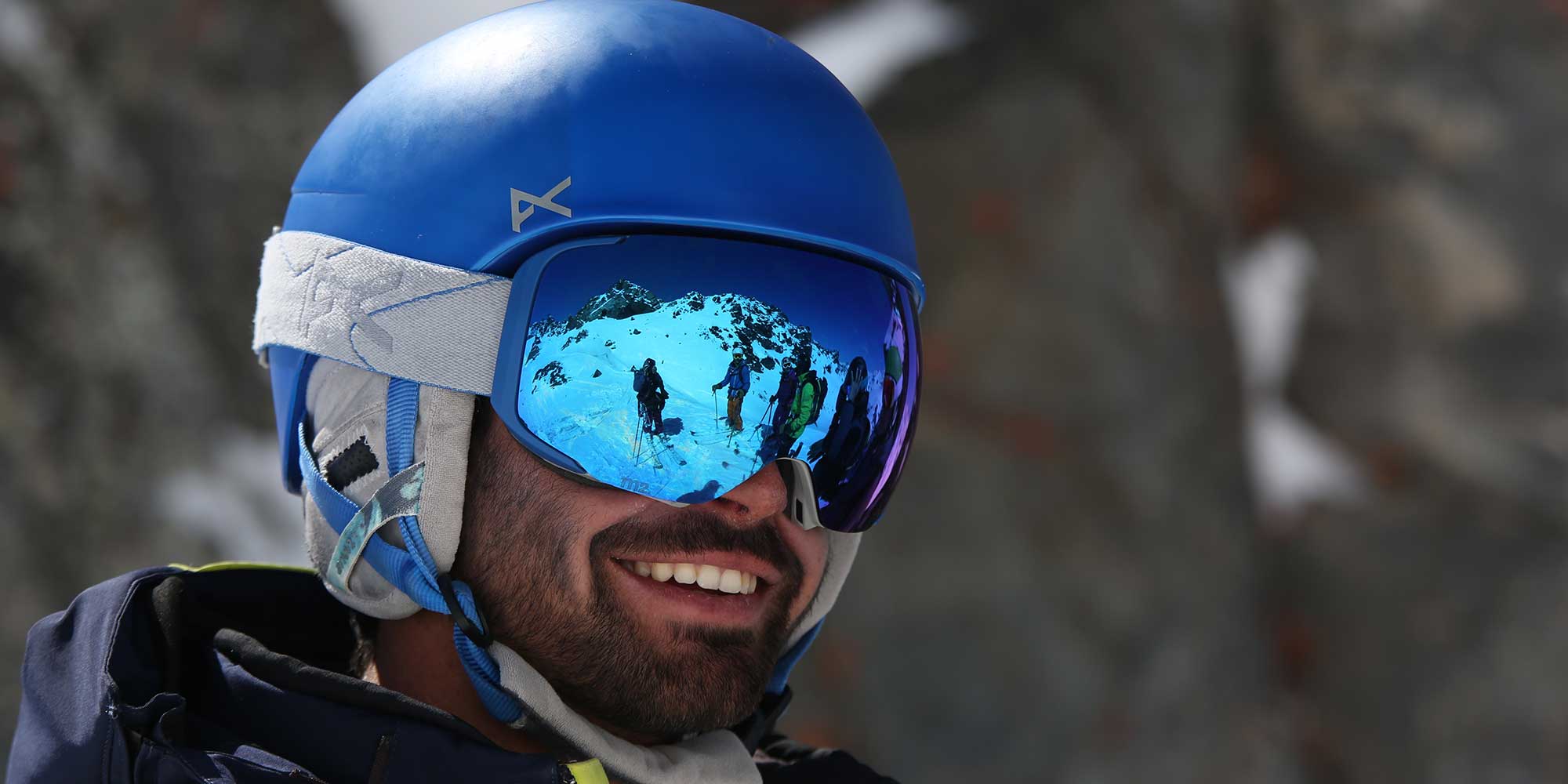Choose Your
Ski Goggles
I don’t need any goggles, I’ll just go skiing with my sunglasses…Think again! Goggles are an important part of your kit as they protect your eyes from the icy wind and cold as well as the sun. But how to choose your ski goggles with so many different brands and types to choose from?
Why you should wear ski goggles
Ski goggles are the best sun protection one could get in the mountains. Even on cloudy days where one hardly sees the sun there is still radiation, which is intensified as it is reflected off the snow. Sunglasses often don’t offer any protection on the sides or the top, leaving your eyes vulnerable to radiation after all.
Moreover the icy wind can make the air feel even colder than it actually is, especially as you pick up a little speed coming down the mountain. Wearing goggles avoids your eyes from getting watery and thus having to wipe them or squint all the way to the next chairlift.
To sum up, mountains are the most harmful environment for your eyes and protection is absolutely necessary!
What kind of lens to choose
Lenses are divided up in different categories based on how much light gets through. Besically the less UV radiation gets through, the higher the lens’ category. The 5 different categories (ranging from 0 to 4) are as follows:
- Category 0: the VLT (or Visible Light Transmission) is over 80%. This means very few light is filtered and the lens is almost completely transparent. This kind of lens is only recommended for night skiing as it protects agains sleet and wind but allows light through for maximum visibility.
- Category 1: this lens lets 80% to 43% of light through. Thus the lens is still quite translucent making it perfect for snowy days or during whiteouts where visibility is very poor.
- Category 2: 43% to 18% of light gets through these lenses. This means these are the best lenses for cloudy or overcast days
- Catergory 3: letting only 18% to 8% of the light through these lenses are the one’s to wear on bluebird days where the sun’s out and there’s hardly a cloud in the sky.
- Category 4: with less than 8% of visible light transmission these are the darkest lenses you can find. They are usually reserved for very high altitudes and glacier skiing.
What is a polarised lens?
Have you ever been blinded by light bouncing off a reflective surface like for example the sun on a lake, a window or the snow? This is what we call “polarised light”. Rather uncomfortable, but even dangerous when this happens while driving a car or flying down a ski slope.
This blinding glare can only be blocked by wearing polarised lenses. They basically block any light coming in from the wrong angle thus leaving our vision free .
Prosneige tips and tricks when buying goggles
The most important thing to do when choosing and buying ski goggles? Bring your helmet to the shop to try them on! Nothing quite as annoying as coming home to realise your goggle doesn’t fit the shape of your helmet. A gap between the top of your goggles and your helmet leaves your forehead bare and let’s the cold air through. Or maybe the helmet pushes the goggle down over your nose. All in all things that can ruin a nice day out on the slopes. So take your helmet with you and ask the person in the shop for advice. Goggles come in different shapes and sizes: small faces, round faces, long faces…Even specific ones for children. There is a goggle out there for everyone. Make sure to try them on to avoid surprises as you’re heading out for the day.



